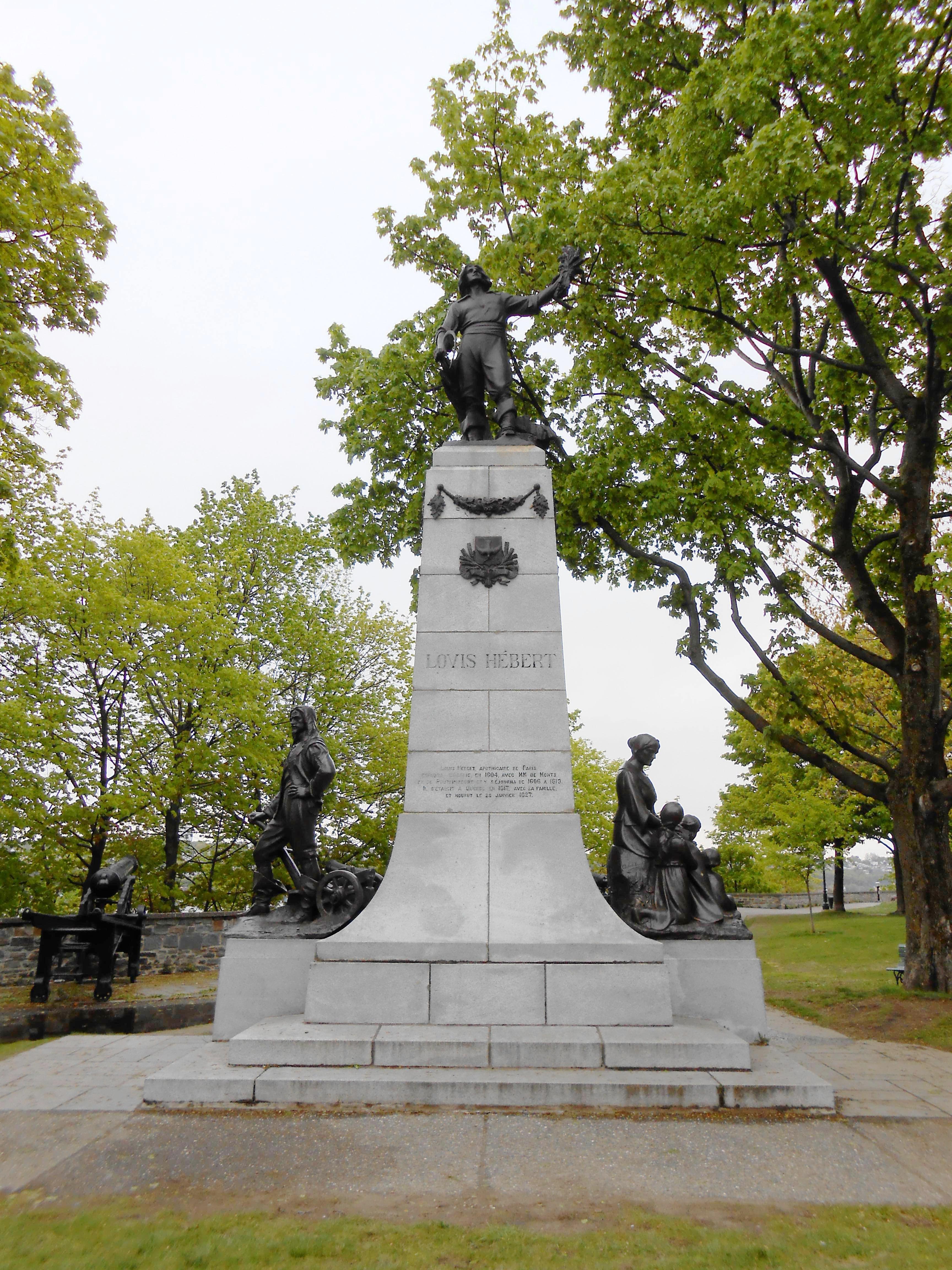Louis Hébert
 1575
| death_date =
| death_place =Quebec
| birth_place =Paris
| burial_place = Vault of the Recollets, Quebec
| burial_coordinates =
| monuments = Statue in Montmorency Park, Quebec City
| nationality =French, Canadian
| occupation = Apothecary, farmer
| years_active =
| known_for = First European settler of New France
| notable_works =
| spouse = Marie Rollet
| children = Anne, Guillaumette, Guillaume
}}
1575
| death_date =
| death_place =Quebec
| birth_place =Paris
| burial_place = Vault of the Recollets, Quebec
| burial_coordinates =
| monuments = Statue in Montmorency Park, Quebec City
| nationality =French, Canadian
| occupation = Apothecary, farmer
| years_active =
| known_for = First European settler of New France
| notable_works =
| spouse = Marie Rollet
| children = Anne, Guillaumette, Guillaume
}}Louis Hébert (; c. 1575 – 25 January 1627) is widely considered the first European apothecary in the region that would later become Canada, as well as the first European to farm in said region. He was born around 1575 at 129 de la rue Saint-Honoré in Paris to Nicolas Hébert and Jacqueline Pajot. He loved another woman but according to his father's wish he married Marie Rollet on 19 February 1601 at the Church of Saint-Sulpice, Paris.
In 1606, he accompanied his cousin-in-law, Jean de Biencourt de Poutrincourt et de Saint-Just, to Acadia, along with Samuel de Champlain. He lived at Port Royal (now Annapolis Royal, in southern Nova Scotia) from 1606 to 1607 and from 1611 to 1613 when the habitation at Port Royal was destroyed by the English deputy governor of Virginia Samuel Argall.
In 1617, with his wife, Marie Rollet, and their three children– Guillaume, aged three; Guillaumette, aged nine; and Anne, aged 14 – he left Paris forever to live in Quebec City. He died there 10 years later because of an injury that occurred when he fell on a patch of ice.
Statues of Louis Hébert, Marie Rollet, and their children are prominent in ''Parc Montmorency'' overlooking the St. Lawrence River in Quebec City. Provided by Wikipedia